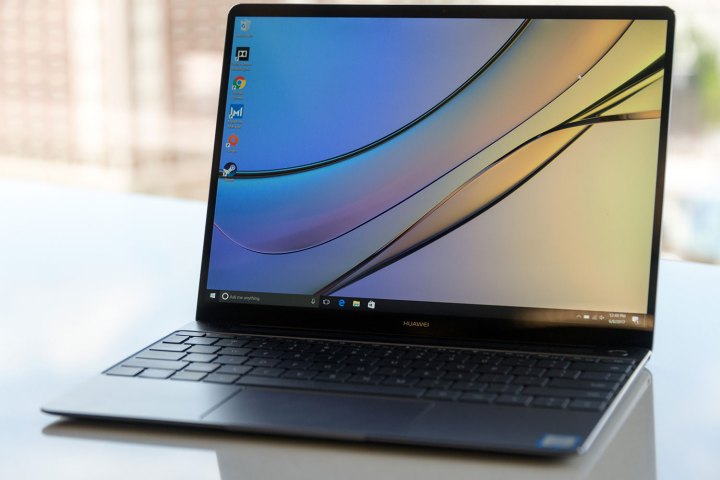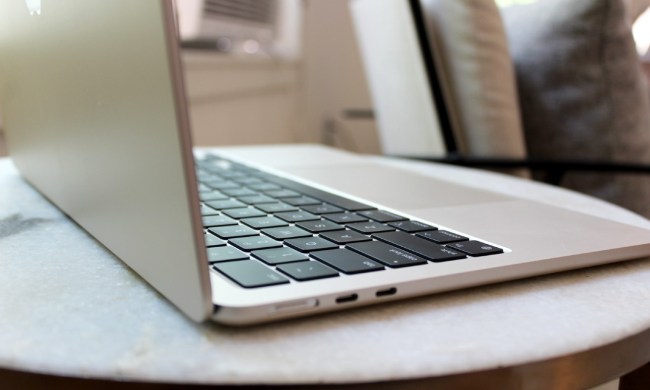
I jumped head-first into Windows 10 on a notebook built by a company known for smartphones.
Fear of change is a common emotion, and modern tech seems designed to encourage that fear. Apple, Google, Microsoft, Amazon, and many other companies use ecosystems to their advantage. We buy hardware, software, and services that work together. Swapping to another ecosystem is always daunting.
What if that special file doesn’t work? What if I don’t understand how to do something important? What if my world completely implodes, and I can’t handle it?
“Change. Fear it,” the big-name companies whisper in our collective ears.
I decided to defy them, and jumped head-first into Windows 10 on a notebook built by a company known to most only for smartphones. This is my story.
I embraced the fear
My Fear Factor-style challenge was a simple one. Use the MateBook X as a replacement to my 2011, 11-inch MacBook Air, which is the laptop I take out and about with me.
That’s a tall order. My Air sees far harsher use than my desktop Mac, and when I use it, I’m often short on time. Everything needs to work when it’s needed, without any fuss. The MacBook Air has done exactly that for the last five or so years.
The fear was there when I opened the MateBook X’s box and took out the shiny, golden laptop. Luckily, the computer made a good first impression. It’s thin, and its consistent thickness — compared to the MacBook’s wedge-shape — made it feel more modern, slender, and chic. It’s also incredibly light. Size and weight is important in a laptop that I will be carried all day, and the Huawei passed my initial inspection without issue.
Windows 10 started quickly, though it needed a few personal details and inevitable updates before it was ready to start working. Set-up went on without a hitch, and after about an hour, the MateBook X was ready to go.
The fear got me, and I viewed the space outside Apple’s walled garden as a terrifying wilderness.
Setting up a computer wasn’t the part I feared. I’m technically competent, so getting it working at a basic level, shouldn’t have been especially problematic anyway. No, problems were going to arise when I started making it suitable for everyday use. That meant apps and programs I was familiar with being installed, media synced and possibly converted over to a different file format, and my biggest worry of all — passwords and login data.
Without all that, I’d be very stuck indeed.
To be clear, I wasn’t looking for a carbon copy of my Mac in a different body, but I did want a carbon copy of my daily workflow. A Windows machine would never work for me if getting it set up to my standards required hours of effort.
Fortunately, that wasn’t the case. Within an hour, the Huawei was in the same state of operational readiness as my long-loved MacBook Air. Everything was shockingly easy, to the point where I didn’t even need to sign-in to the Microsoft Store to download apps.
It was Google which, to my surprise, proved the real hero. Syncing Google Docs, Calendar, Gmail, and Chrome with the new Huawei meant everything from appointments to passwords were ready and waiting on the MateBook X. I didn’t need to transfer anything manually, outside of music files, which was also effortless.
I was now living a dual life. I had a Mac at home, and Windows 10 on the MateBook X when out and about.
And I was loving it.
Windows 10 exceeds expectations
Over the next few days, I learned what I liked and didn’t like about the MateBook X, and about Windows 10. My favorite feature turned out to be Windows Hello with the MateBook X’s fingerprint scanner. It worked flawlessly, and was a huge time-and-effort saver over a password. The MateBook X’s 13-inch screen is stunning, with 2,160 x 1,440 resolution, and a very thin bezel. The glass panel is reflective, but not so much that I couldn’t work outside on a sunny day. The MateBook X’s keyboard is excellent, with precise motion, great spacing — highly reminiscent of the MacBook, in fact.
The MateBook X, and Windows 10, integrated into my work without any problems at all
I did run into a few hardware quibbles. The keyboard backlight wasn’t great, and at some angles the keys weren’t properly illuminated, making placement difficult. That’s an important point when you’re adjusting to a new computer. The trackpad felt small, and the response was sludgy rather than fluid. Pushing it down to click didn’t feel great either. Battery life didn’t disappoint, but couldn’t meet my MacBook Air’s still impressive 8 – 9 hours. I got about 7 hours, spread between standby and use.
Windows 10 was a wonderful, refreshing surprise. A decade had passed since I last used it for any length of time, and none of my memories were especially good. These past two weeks have changed that. Visually, for me, Windows 10 has evolved more in that time than MacOS, which awesome and surprising to see. It’s fresh and modern, and the task bar is genuinely helpful, which is more than can be said of the MacOS Dock. Even exploring the settings menu was easy, and using search to find how to perform certain actions was faultless.
I’m not blindly in love, though. Having to tell Word I wanted to edit a downloaded document before it would let me is annoying. The Start Menu, which was once simple, is now a big, muddled mess. Out-of-the-box, it’s difficult to know who would find it useful, because it’s just so full of Tiles doing … stuff. If I was living with Windows 10 for longer, then I suspect putting in the time and effort to personalize it would pay off; but it’d be preferable if it was simpler and better thought out straight away, which would encourage customization, rather than making it feel daunting.
Still, I found Windows 10 to be unexpectedly simple for beginners to pick up and live with daily. I’d gone into the experiment with low expectations. The fear got me, and I viewed the space outside Apple’s walled garden as a terrifying wilderness filled with monsters and bandits. I emerged after the two weeks relatively unafraid. The MateBook X and Windows 10 had integrated into my work life without any problems at all. It was as smooth as going from an old car to a new one. The feel is different, but not worse, and there’s even a few shiny new features to check out.
Don’t be afraid to change
Did Windows 10 and the MateBook X make me fearless? Once a reliable virus scanner — something I’ve never installed on my Mac — was up and working, yes, it did. I’d spent a decade considering Windows the enemy, after it irritated me enough that I jumped ship, but the ghost of Vista has been well and truly exorcised.
Huawei impressed, too. The MateBook X is a genuine MacBook alternative, worthy of the smartphone brand I’ve grown to admire.
The build quality, finish, and style all equal Apple’s efforts and I’m going to miss it when it goes back. News that Windows 10 is good won’t surprise those already using it, but for the many who haven’t considered it after being disappointed by versions of old, and are angry about the skyrocketing MacBook prices, take my word. Swapping to Windows isn’t the nightmare you expect.





